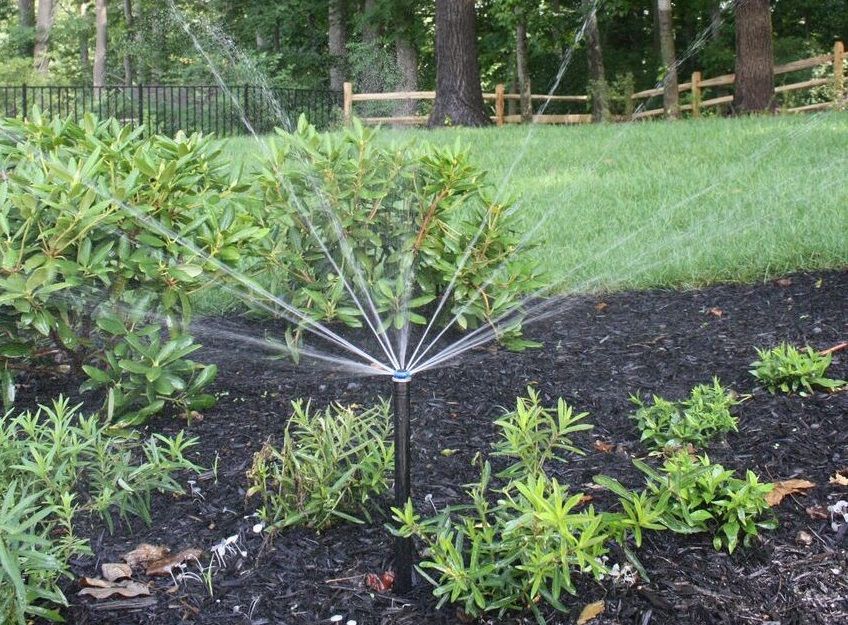4 Elements of Professional Turf Care to Help Your Lawn
Everyone will attest to the beauty of a well-cared-for, healthy lawn in a landscape. And while homeowners know the general principles for maintaining a lawn, professional turf care can elevate a lawn from okay to excellent with carefully customized lawn treatment programs.
4 Elements of Professional Turf Care
The process of turf care is a combination of science and art. As professionals, we are familiar with the scientific aspects of turf care, and we apply the principles through practical knowledge of the art of turf grass management. Today, Burkholder discusses some elements of professional turf care that can improve your lawn’s condition, aesthetics, and value.
1. Irrigation
One of the significant elements of professional turf care is installing a smart irrigation system to keep a lawn watered properly. Homeowners often take care of watering their trees and plants, but yards are too large for homeowners to ensure the correct amount of water to all areas. For best results, a landscape professional will advise the installation of an irrigation system.
Pennsylvania summers can scorch and dry up grass. Maintaining the right soil saturation across a landscape is another factor of keeping a lawn healthy, along with watering at the right time of day consistently. A landscape professional working on lawn and turf care will understand all of these factors and can design an automatic sprinkler irrigation system to save money, water, and hassle.
2. Mowing and Fertilizing

Mowing reduces the work required by the lawn’s root system, and a freshly mowed lawn greatly increases curb appeal. In addition to watering and mowing, other tasks are performed regularly by professional turf and lawn care specialists.
Lawn fertilizing is one of those tasks. The frequency, rate and timing of fertilization depend on the species being grown, site conditions (e.g., sun or shade), and other factors such as soil type and pH (acidity or alkalinity). Fertilization increases the amount of nutrients in the soil. These nutrients, such as nitrogen, phosphorus, and potassium, provide numerous benefits. For example, nitrogen is a very beneficial element to add to the grass, helping the lawn recover from environmental stresses, sustaining plant health, and assisting in the production of genetic material that allows plants to grow and reproduce.

3. Weeds and Pest Control
Another significant component of professional lawn and turf care programs is the removal and management of unwanted aspects, such as weeds and pests. Removing weeds is effective, but prevention is a weed control focus among landscape professionals. Pulling out unsightly weeds can be the first step, but professionals may use more extensive solutions such as herbicide and other treatments.
Pest control is another essential piece of good lawn care. While some pests can be annoying, others can cause damage to plants and a landscape, especially ones with gardens. Landscapers have a number of pest control solutions, and the best solutions are those that effectively control pests while maintaining the health of the turf.
4. Plant Health Care and Maintenance
Good turf care is an ongoing, long-term process. That process requires ensuring that your turf and soil get the right amount of nutrients. One way to keep your lawn healthy is to aerate periodically. Aeration involves perforating the soil with small holes to allow air, water, and nutrients to penetrate lawn thatch. As a result, grass roots grow deeper and produce a healthier lawn.
The ultimate goal of a professional lawn care company is to keep the entire ecosystem of a lawn healthy. and the payoff of a beautiful, lush yard is more than worth the effort.
Contact Burkholder for Professional Turf Care Today
Burkholder Brothers has been serving Main Line communities for decades, providing a wide range of landscaping services. Our landscapers and designers have years of experience helping many homeowners turn their lawns into beautiful, vibrant landscapes. To see how our professional turf care can help your lawn, contact us today for a consultation.

